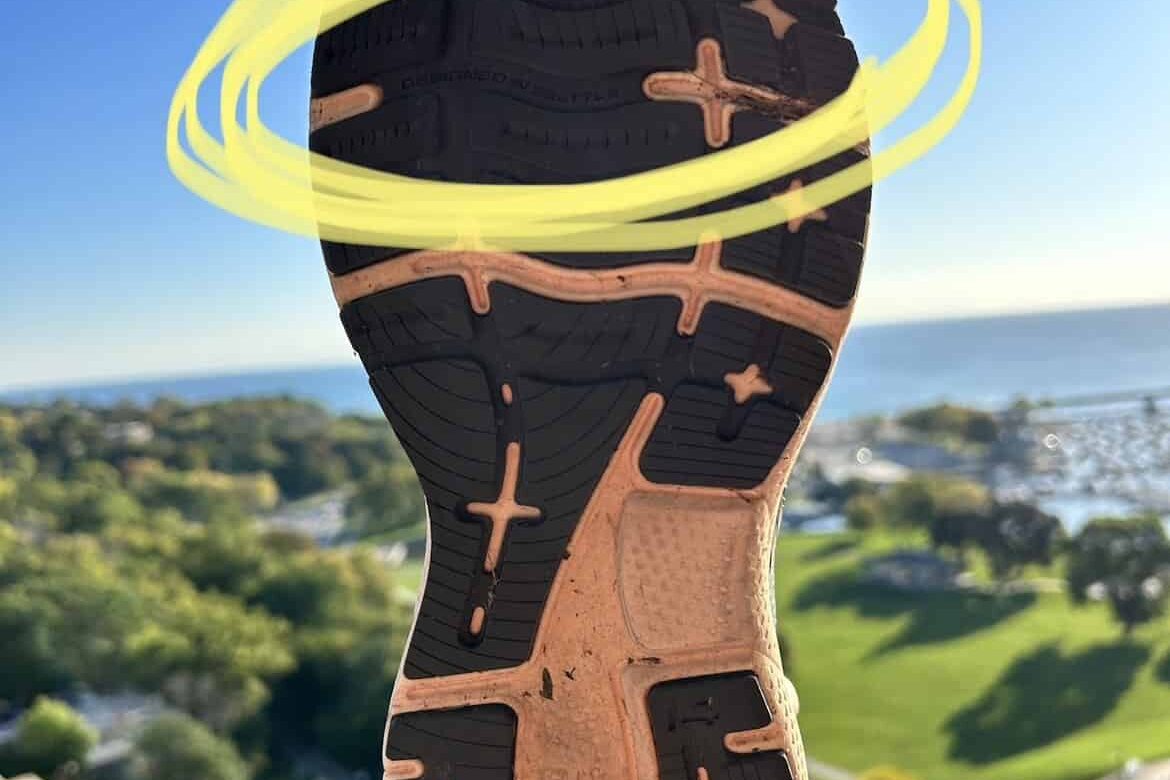What Are My Shoes Telling Me?
Have you ever noticed a certain wear pattern on the tread of your shoes? Maybe the forefoot wears quicker than the heel or vice versa. Perhaps the outer aspect of your shoe becomes less cushioned than the medial aspect. You may notice a hole rubbing near your great toe. No matter the wear pattern, your shoes share insight about your gait pattern, or how you walk or run. Learn more about what are my shoes telling me?
The Gait Cycle
There is a “typical” pattern to which humans walk. The phases of walking include the contact phase (when your foot initially contacts the ground- usually a heel strike), midstance (when your foot is flat and your weight is over your foot as you swing the other leg through), terminal stance (as you are about to push off the foot as it is behind you), push off (when you push off the forefoot/big toe) and swing phase (when you swing the leg through).
Terms to know:
Pronation: your foot rolls inward, your arch lowers toward the ground, the outer foot turns outward/upward, and more weight is on the medial aspect of your foot
Supination: more weight is on the outer aspect of your foot, and the bottom of your foot turns inward/upward
A certain degree of pronation and supination are “normal” in the standard gait cycle. Typically, after a heel strike, our weight shifts slightly to the outer edge of our foot (supination) and then rolls slightly to the middle side towards the great toe (pronation) for push-off.
If you have excessive pronation or supination, your foot may more heavily wear out parts of your shoe’s cushion and tread.
Common Wear Patterns:
Outer/lateral shoe wear: wear under the outer three toes/the lateral heel
You may have a supinated gait meaning you put more weight on the outer aspect of your foot when you walk/run and don’t transfer it back to the medial side of the foot.
– Other common characteristics:
-
- Pain and/or calluses on the outer aspect of the foot or outer toes
- High arches
- Tendency to roll ankle: it is easier to roll your ankle if you have increased supinate
Inner/medial shoe wear: wear under the big toe/the middle heel
You may have increased pronation of your gait meaning you place more weight on the medial aspect of your foot when you walk/run.
– Other signs:
-
- Plantar fasciitis
- Flat feet / collapsing arch
- Shin pain
- Medial knee pain
- Hip pain
Heel wear: wear on the heel of your shoe
This is normal in a large majority of walking/running patterns. Because we typically walk in a heel > toe pattern, the heel is commonly worn out in shoes.
– If you have pain/injury with running specifically and your heel strikes when you run, you may have your gait assessed to talk about other running patterns
– If you have more wear on one side of your heel, this suggests over-pronation (medial wear) or over-supination (lateral wear) with walking/running
Forefoot (ball of foot) wear:
This is another normal wear pattern. If it is very worn down, it is likely time to get new shoes.
– Similar to the heel wear pattern, if the medial forefoot wears more, you may overpronate and if the lateral forefoot wears more, you may over supinate.
– In regards to running, you may see this wear pattern due to a forefoot striking pattern during the contact phase in which you land on the ball of your foot. If you have pain in the front half of your foot, calf, or Achilles, forefoot striking may contribute to your discomfort.
What Do I Do Now?
Your wear patterns can tell you some information about how you walk or run. Again, a certain degree of pronation/supination is typical in our walking and running patterns. Excessive wear in certain areas of our shoes can tell us if we walk/run with neutral feet, with a supinated gait, or with a pronated gait.
Sometimes, excessive motion (excessive pronation or supination for example) can cause pain or injury with increased bouts of walking/running. If you are experiencing any foot, ankle, knee, hip, or back pain and suspect it may be due to the way you walk or run, schedule a consultation to discuss this with a physical therapist or consider having your shoe-wear choices assessed.
If the tread of your shoes is significantly worn out in one or several areas, you may want to get new shoes as the support your shoes are intended to provide is decreased. In general, runners should change their running shoes about every 300-500 miles.
Treatment options:
– Physical Therapy
-
- Schedule a consult with a physical therapist to determine what exercises may help to improve your mechanics or reduce your pain
– Walking/running analysis
-
- Have your gait assessed to be sure your shoe wear supports your foot and walking/running pattern in the correct way
– Custom orthotics
-
- If you have significant pain based on your mechanics, custom orthotics may be created to provide the appropriate support for your foot/ankle with walking/running.

